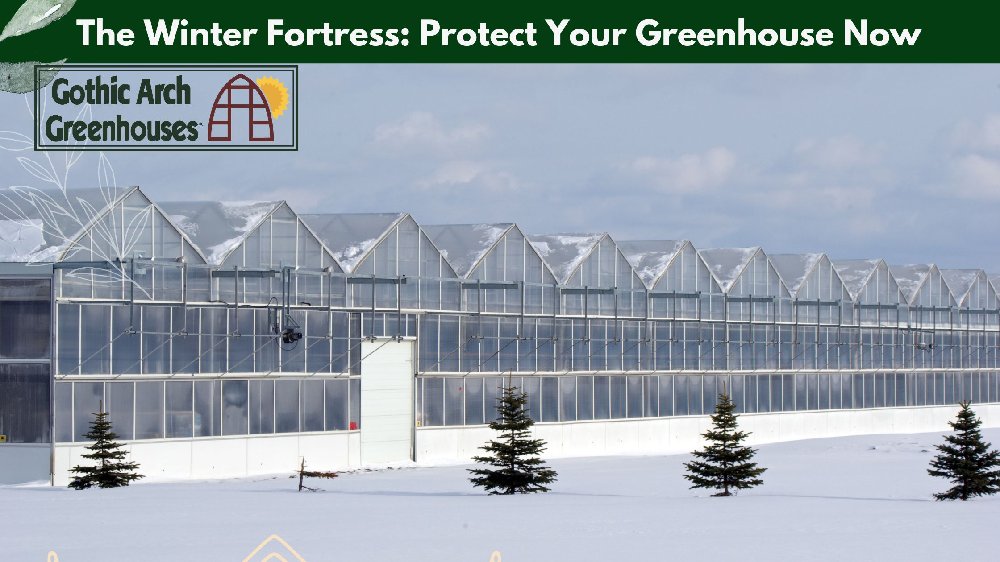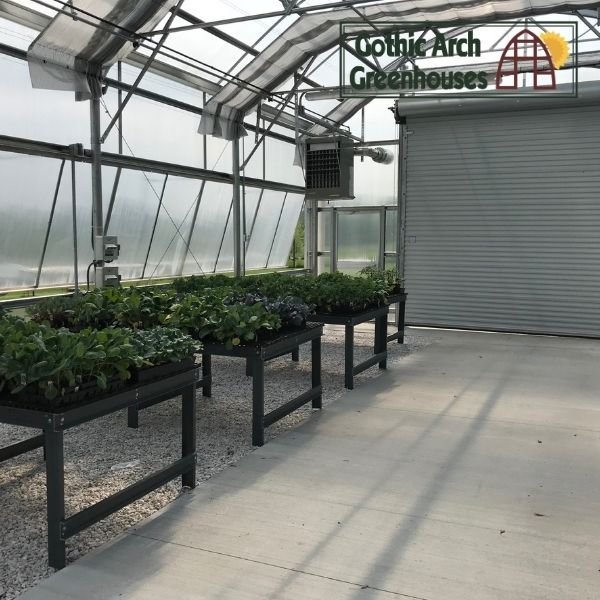Research-Backed Strategies to Safeguard Your Plants Through Winter's Harshest Conditions
The Winter Fortress: Protect Your Greenhouse Now
As the crisp autumn air gives way to winter's biting chill, gardeners face one of their most significant annual challenges: protecting their greenhouse plants from freezing temperatures. While many assume a greenhouse alone provides sufficient cold-weather protection, the reality is more complex. Without proper preparation, your greenhouse can transform from a plant sanctuary into an icy tomb when temperatures plummet.
This comprehensive guide draws on scientific research and expert gardening experience to equip you with practical strategies for safeguarding your greenhouse through winter's harshest conditions. Whether you're a seasoned horticulturist or a passionate beginner, you'll discover how to transform your greenhouse into an impenetrable "winter fortress" that keeps your plants thriving rather than merely surviving.
Understanding the Enemy: Frost, Freeze, and Chilling Injury

To effectively protect your plants, you must first understand the different types of cold damage they face. Chilling injury differs significantly from freeze damage, occurring at temperatures above freezing (below 45-50°F/7-10°C) through disruption of cell membranes rather than ice crystal formation. Symptoms include rapidly wilting leaves, water-soaked areas, sunken pits from cell collapse, and eventual browning or blackening of damaged tissue.
Freeze damage occurs at or below 32°F (0°C) when ice forms between plant cells, drawing out water and causing dehydration and cell rupture. Interestingly, a standard unheated greenhouse typically provides only about a 2°C temperature bump over outside conditions during extreme cold, highlighting why additional protection is crucial for tender plants.
The table below compares the three main types of cold damage:
| Type of Damage | Temperature Range | Mechanism of Damage | Common Symptoms |
|---|---|---|---|
| Chilling Injury | Above freezing (below 45-50°F/7-10°C) | Disruption of cell membranes | Wilting, water-soaked areas, sunken pits, necrosis |
| Frost Damage | At or below 32°F (0°C) | Ice formation on surfaces | Blackened, water-soaked foliage; collapse of tender growth |
| Freeze Damage | Below 32°F (0°C) | Extracellular ice formation, cell dehydration | Limp, dark foliage; complete plant collapse upon thawing |
Passive Protection Strategies: Prevention Before Cure
Passive protection refers to methods implemented before cold weather arrives that provide long-term defense. These strategies form the foundation of your winter fortress, requiring initial effort but offering continuous protection throughout the season.
1. Insulation: Your First Line of Defense
Proper insulation is crucial for maintaining stable temperatures. Bubble wrap insulation applied to the interior of your greenhouse creates air pockets that dramatically reduce heat loss while still allowing light transmission. For best results:
- Use horticultural-grade bubble wrap with larger bubbles for better insulation
- Attach to the interior frame using greenhouse clips or tape
- Pay special attention to sealing gaps around doors, windows, and vents
Additionally, consider shadehouse cladding - transparent polyethylene film applied to exterior structures - which traps heat and protects against cold winds. Newer infrared-retentive films provide superior heat retention, though at a higher cost.
2. Thermal Mass: Nature's Heat Battery
Thermal mass refers to materials that absorb heat during the day and slowly release it at night, moderating temperature fluctuations. This passive heating method can make a significant difference in overnight temperatures.
- Water containers: Position dark-colored barrels or water containers throughout your greenhouse. Water has one of the highest heat capacities of common materials, making it exceptionally effective at storing thermal energy. One gardener reported using black metal drums filled with water that absorbed sufficient daytime heat to keep the greenhouse frost-free overnight.
- Stone and brick: Paved floors made of brick, stone, or pavers function as excellent thermal mass, as do cinderblock foundations. One gardening enthusiast noted that their "paver floor" and "cinderblock foundation with spray foam insulation" worked together to absorb warmth during the day and release it gradually at night.
3. Strategic Plant Management
Your approach to plant care can significantly impact cold resistance:
- Avoid late-season nitrogen fertilization, which stimulates tender new growth, particularly susceptible to cold damage
- Water plants to the container capacity before forecast cold events, since moist soil absorbs and stores more solar radiation than dry soil
- Group plants together to create beneficial microclimates through collective transpiration and heat retention.
- Select cold-tolerant species when possible, as chill sensitivity varies significantly among plant types.
Active Heating Methods: When Nature Needs Help

When passive measures aren't enough, especially during extreme cold snaps, active heating becomes necessary. The table below compares the most common greenhouse heating options:
| Heating Method | Best For | Pros | Cons | Tips for Use |
|---|---|---|---|---|
| Electric Heaters | Small to medium greenhouses with electricity access | Clean operation, thermostatic control, reliable | Ongoing energy costs require a power source | Use with thermostat; position low as heat rises; consider backup for power outages. |
| Paraffin Heaters | Off-grid situations, emergency backup | No electricity needed, produces CO₂ for plants | Produces water vapor, requires ventilation, and has fuel costs | Keep wicks trimmed; ensure adequate ventilation; have extra fuel on hand |
| Geothermal Heating | Energy-efficient root zone heating | Heats root zones efficiently, consistent temperature | Complex installation, limited availability | Can be DIY with buried pipes; excellent for propagation benches |
| Heating Mats | Seed starting, rooting cuttings, potted plants | Targeted root zone heating, energy-efficient | Limited to small areas, requires electricity | Ideal for propagation stations; use with a thermostat for efficiency |
Supplemental Heating Tips
- Set thermostats strategically: Most plants only need protection below 45°F (7°C)
- Use fans to circulate warm air and prevent cold spots
- Consider non-electric backups like paraffin heaters for power outages
Creating Microclimates: The Art of Layered Protection
Within your greenhouse, you can create distinct microclimates that offer varying levels of protection:
- Group plants by temperature needs: Cluster cold-sensitive plants together in the most protected area
- Use thermal mass strategically: Place heat-absorbing materials near your most tender plants
- Employ secondary insulation: Drape frost protection fleece or horticultural blankets over plants during freezing nights. One gardener reported using "up to three layers of horticultural fleece as frost protection" for overwintering plants.
- Create thermal curtains: Install retractable heat curtains that can be drawn across the greenhouse at night to reduce heat loss through the roof.
Interestingly, something as simple as black-painted wooden tables can provide unexpected benefits. One gardener discovered that these tables absorbed and held heat during the day, releasing it gradually in the evening to keep the surrounding air slightly warmer.
Winter Maintenance and Monitoring: The Key to Success
Temperature and Humidity Monitoring
Vigilant monitoring allows for timely intervention before problems escalate:
- Install a reliable thermometer and hygrometer to track both temperature and humidity
- Consider smart sensors with remote alerts to notify you of dangerous conditions
- Monitor forecasts regularly to prepare for upcoming cold snaps
Ventilation and Humidity Control
While retaining heat is crucial, proper ventilation remains essential even in winter:
- Open vents on sunny days to allow fresh air circulation and prevent humidity buildup
- Use automatic vent openers that respond to temperature changes without electricity
- Consider a dehumidifier if condensation becomes excessive and risks fungal diseases
Pest and Disease Management
The enclosed, warmer environment of a winter greenhouse can create ideal conditions for pests and diseases:
- Inspect plants regularly for overwintering whitefly, mealy bug, or red spider mite
- Treat promptly with environmentally friendly sprays when problems are detected
- Remove dead or decaying plant material promptly to discourage pathogens
Putting It All Together: Passive vs. Active Protection
The most effective winter protection combines both passive and active strategies:
| Protection Strategy | Methods | Cost | Effectiveness | Best Used For |
|---|---|---|---|---|
| Passive Protection | Insulation, thermal mass, plant grouping, and site selection | Low to moderate | High for moderate cold | All winter greenhouses the primary defense |
| Active Protection | Heaters, heating mats, thermal curtains, heat cables | Moderate to high | High for extreme cold | Tender plants; extreme weather; backup |
Greenhouse Resources
If you're looking to purchase a greenhouse or need guidance on selecting the right one for your needs, these resources may be helpful:
- Greenhouse Buyer's Guide - Comprehensive information to help you choose the perfect greenhouse
- Browse Greenhouses - Explore a wide selection of greenhouse styles and sizes
Building Your Winter Fortress: A Summary
Transforming your greenhouse into a winter fortress requires a multi-layered approach:
- Start with passive strategies - insulation, thermal mass, and proper plant management
- Add active heating when and where needed, based on your specific plants and climate
- Create microclimates within your greenhouse for added protection where needed
- Monitor consistently to address problems before they damage your plants
- Maintain proper ventilation and pest control even in cold weather
As one experienced gardener wisely noted, "With rising energy prices, I don't heat the whole greenhouse anymore," but instead uses targeted protection methods. This approach of strategic, layered protection - rather than relying solely on energy-intensive heating - represents the most sustainable and effective path to winter greenhouse success.
By implementing these research-backed strategies, your greenhouse can indeed become an impenetrable winter fortress, protecting your plants from freezing while providing you with the joy of gardening year-round. The investment in time and resources will repay you many times over in healthy, vibrant plants that emerge from winter ready to flourish in spring.
